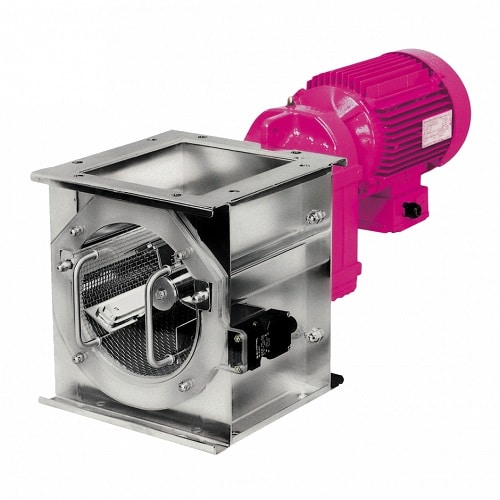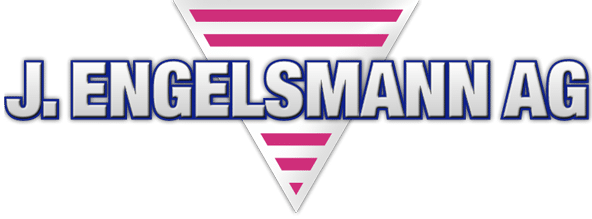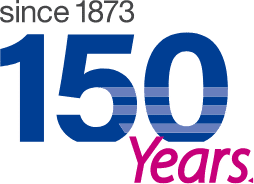When processing PVC powder, agglomerates or lumps occur that impair the production process and the quality of the end product.
How can they be separated or dissolved as efficiently as possible?
Among other alternatives, agglomerates can either be separated with sieving technology or dissolved with the help of passing sieves. This depends mainly on how solid the agglomerates are or how difficult it is to separate the adhering product particles from each other.
Previously, the customer, a well-known plastics producer, relied on a lump breaker to break up agglomerates in the PVC powder. The crusher was downstream of a dryer and connected to a blow-through airlock on the outlet side. This dosed the processed product into a pneumatic conveying line.
However, the outdated lump breaker no longer delivered the desired results. Convinced by the results of an Engelsmann strainer, which the customer already used in its PVC production, the lump breaker was also to be replaced by a JEL strainer.
Passing screens are used when the product to be processed tends to compact. This interferes with further processing in downstream production stages and has a quality-reducing effect. However, passing sieves are only suitable if the agglomerates are not too hard and also dissolve when passing through the sieve mesh.
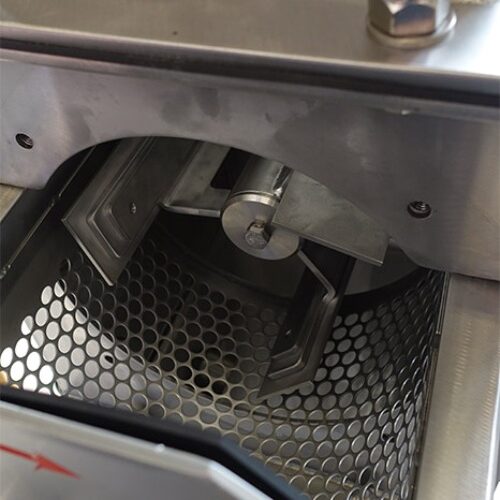
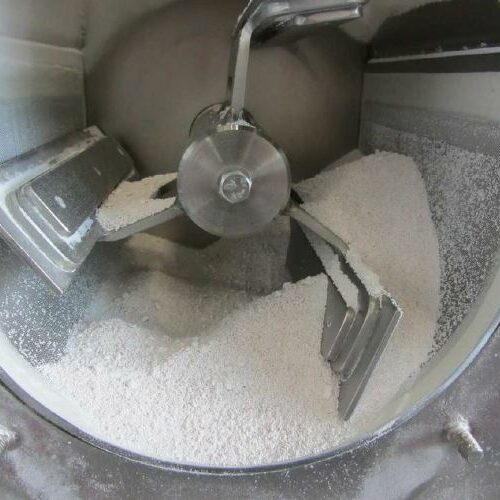
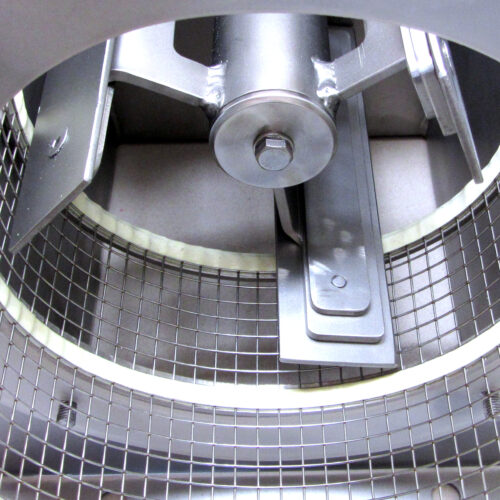
Left in the picture: The JEL PS passing sieve for breaking up agglomerates in PVC powder – designed with a perforated plate to suit the product and the task. Fine sieve meshes or grids can also be used for the sieving process – depending on the special characteristics of the material to be sieved.
More efficiency and lump-free PVC powder
Features of the JEL PS passing sieve machine
To ensure that the downstream process is not clogged and that homogeneously screened raw material can be processed in the appropriate grain size to produce a flawless end product.
Materials – suitable for the task
The parts in immediate contact with the product (inner housing, rotor, pass bars) are made of stainless steel 1.4571 or 1.4404 and have stained and passivated surfaces.
ATEX conformity
Due to the formation of dust during the pass sieving of plastic powder, the entire production environment is an explosion protection zone. The JEL PS passing sieve, including the electric drive, is therefore designed to be ATEX-compliant.
Seamlessly integratable into the existing environment
The strainer is equipped with reinforced inlet and outlet funnels. It is connected to the dryer on the inlet side and to the rotary valve on the outlet side via flange connections. This doses the PVC powder into the pneumatic conveying line.
Sensors for process automation
Level indicators are installed in the inlet and outlet funnels, whose sensors enable the automation of the processes “feeding the passing screen” and “material discharge from the passing screen”. This ensures a smooth, continuous screening process: At the inlet, an “empty” signal is given if the PVC powder coming from the dryer falls below a minimum filling level in the funnel. At the outlet, a “full” signal is given when the material column above the blow-through airlock reaches a critical height.
Continuously the right grain size
After drying, the PVC powder has an initial grain size of max. 20 x 30 x 5 mm. It is broken down with the JEL PS to a final grain size of <10 mm. For this purpose, the sieve basket is made of perforated plate with a hole width of 10 mm.
Individual fine adjustment
In order to be even more flexible when screening and crushing the agglomerated PVC powder, the rotating passing bars are adjustable. The distance between the bars and the sieve mesh can be reduced or increased – depending on the individual characteristics of the batch.
Easy handling
The entire sieve basket can be extracted from the front of the straining machine in a few easy steps. This makes it easier for the operator to access the inside of the housing for cleaning and maintenance.
Safety is a must
Safety has also been taken into account: the pull-out mechanism is secured with a limit switch. This prevents operators from extracting the screen basket while the machine is in operation.
Proper tightness
PVC powder tends to form dust. To reduce emissions to a minimum, the interfaces are equipped with PTFE seals: between the screen basket and the cover flap as well as at the flange connections between the screen housing and the two funnels.
Easy to clean
Air barrier rings with gap flushing were used for the rotor bearings. Product residues that negatively affect the service life of the rotor bearing and the seal can thus be easily flushed out.
